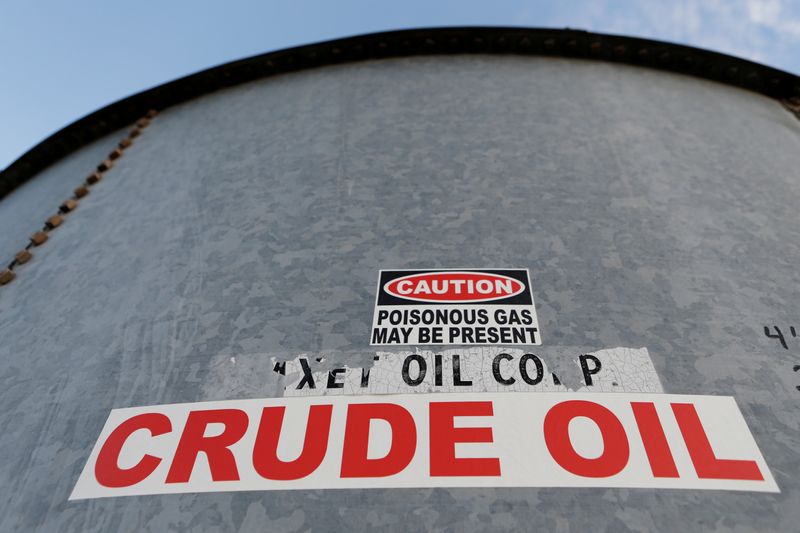NEW YORK (Reuters) – Oil slipped for a fourth day on Wednesday, weighed down by expectations of weaker demand in Europe and by rising U.S. crude inventories.
Several European countries have paused the use of AstraZeneca’s COVID-19 vaccine on worries over possible side effects. Germany is seeing rising coronavirus cases, Italy is imposing a nationwide Easter lockdown and France plans to enforce tougher curbs.
“The suspension will not do the bloc’s economic and fuel recovery any favours,” said Stephen Brennock of oil broker PVM. “The hope now is that Europe can get its sluggish vaccine rollout back on track.”
Brent crude settled 39 cents, or 0.6% lower, at $68 a barrel while U.S. West Texas Intermediate (WTI) crude dropped 20 cents, or 0.3%, to end at $63.68. Both contracts fell by more than $1 during the session.
Prices slipped towards session lows after government data showed U.S. crude inventories rose 2.4 million barrels last week, following Tuesday’s industry report estimating a 1 million barrel-drop. Analysts had forecast an increase of 3 million barrels.[API/S]
U.S. crude inventories have risen for four straight weeks after refinery operations in the south were hampered by severe cold weather last month. Companies are slowly restarting facilities and balances are expected to be restored over the next couple of weeks, analysts said.
“Over three-quarters of last week’s 1.1 million barrel-per-day increase in refinery runs occurred on the Gulf Coast. Another rise in refining activity in next week’s report should usher us back to a trend of inventory draws,” said Matt Smith, director of commodity research at ClipperData.
Further adding pressure, the International Energy Agency said in its monthly report that oil prices are unlikely to mount a dramatic and sustained surge and demand is not expected to return to pre-pandemic levels until 2023.
“IEA’s report has triggered action among oil traders,” said Naeem Aslam of Avatrade. “We have seen some selling.”
Oil has recovered from historic lows reached last year as demand collapsed, buoyed by record oil output cuts by the Organization of the Petroleum Exporting Countries (OPEC) and its allies. Brent reached $71.38 on March 8, its highest since Jan. 8, 2020.
Losses were capped late in the session after the Federal Reserve on Wednesday projected a rapid jump in U.S. economic growth and inflation this year as the COVID-19 crisis winds down, and repeated its pledge to keep its target interest rate near zero for years to come.
A gauge of global stocks cut losses, benchmark U.S. Treasury yields largely held gains and the U.S. dollar also weakened after the highly anticipated statement.
(Additional reporting by Laila Kearney in New York, Alex Lawler in London, Roslan Khasawneh in Singapore and Sonali Paul in Melbourne; Editing by Marguerita Choy and Barbara Lewis)
























